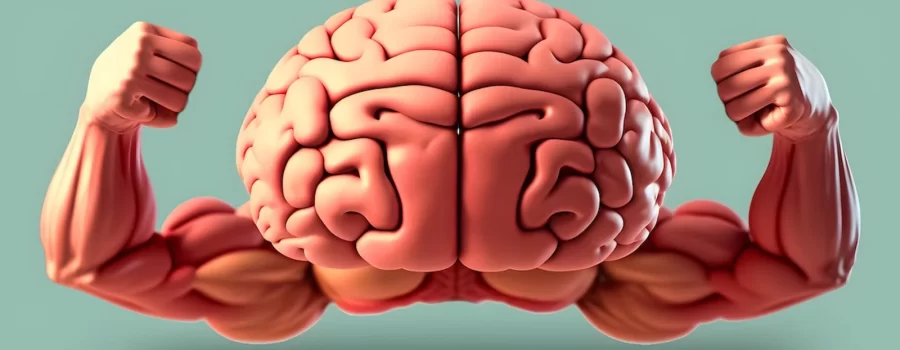The term “sarcopenia” may bring to mind images of weakened muscles and reduced physical ability in the elderly. This decline in muscle mass and strength is common among older adults and has significant implications beyond just physical weakness. It increases the risk of falls, fractures, and dependence on external care, and it may also negatively impact cognitive health.
Recent data indicates a troubling trend: older adults with signs of sarcopenia are over three times more likely to develop dementia than those without muscle loss. While reduced grip strength and muscle mass are already known indicators of cognitive decline, the reasons behind this connection remain unclear.
Why do muscles affect brain health?
The answer may lie in myokines—chemicals released by muscles during exercise that are closely linked to brain health. Other factors such as insulin imbalances, protein metabolism issues, impaired mitochondrial function, and increased inflammation also contribute to cognitive decline.
A comprehensive review by Oudbier et al., titled “Pathophysiological Mechanisms Explaining the Association Between Low Skeletal Muscle Mass and Cognitive Function,” explores this connection. The review examines over a hundred studies on muscle strength, physical performance, cognition, and the biochemical and physiological links between skeletal muscle and the brain. It identifies four key mechanisms that might connect muscle deterioration to cognitive aging: systemic inflammation, insulin resistance, abnormal protein accumulation, and mitochondrial dysfunction.
The Aging Muscle: What’s Really Happening?
As we age, our muscles undergo significant changes. By age 60, we lose between 3% to 8% of our muscle mass every decade starting from age 30. Muscles are made up of two main types of fibers: slow-twitch type I fibers and fast-twitch type II fibers. Type II fibers, responsible for quick energy bursts, decline faster than the endurance-focused type I fibers as we age.
Aging also leads to increased inflammation, marked by higher levels of agents like IL-1β, IL-6, and TNF-α. This inflammation impacts mitochondria, leading to decreased energy production and increased reactive oxygen species (ROS), which further damage cells. Metabolic issues like insulin resistance and muscle degradation through the ubiquitin-proteasome system (UPS) are also prevalent.
A key factor in muscle shrinkage is anabolic resistance, where muscles respond less effectively to growth signals like amino acids. The mTOR pathway, crucial for muscle protein synthesis, becomes less responsive with age, leading to reduced protein synthesis even with adequate protein intake.
Mitochondrial numbers and function decline with age, and accumulated mutations in mitochondrial DNA contribute to cell death. Increased oxidative stress and ROS production create a damaging cycle that further impairs mitochondrial function.
Aging Mind: Understanding Cognitive Decline
Age is a major risk factor for both muscle loss and cognitive decline. According to the World Health Organization, 55 million people worldwide have dementia, with cases expected to double every five years as the global population ages.
Brain changes with age are subtle but significant. Contrary to popular belief, we lose less than 10% of neurons in the central nervous system, primarily in specific regions. However, there is a reduction in axons, synapses, dendrites, and dendritic spines, which are crucial for neuron communication and information transmission.
Links between muscle mass loss and cognitive decline include changes in muscle-specific chemicals (myokines), inflammation, insulin dysregulation, protein accumulation issues, oxidative stress, and mitochondrial dysfunction.
Neuroinflammation, an inflammatory response in the brain, is a key player. Increased production of inflammatory chemicals with age can breach the blood-brain barrier, contributing to conditions like Alzheimer’s disease. The protein Aβ in Alzheimer’s patients activates microglia, brain immune cells, leading to increased inflammation.
Insulin dysregulation also affects brain health. Insulin, crucial for brain function, decreases with age, disrupting brain insulin dynamics and contributing to neurodegenerative diseases by increasing harmful proteins like tau, altering brain plasticity, and heightening inflammation
The mTOR pathway, essential for protein synthesis and cellular function, becomes disturbed with age, affecting mitochondria and contributing to cognitive decline. Mitochondrial damage accumulates due to ROS, creating a feedback loop that impairs energy production and exacerbates cellular damage.
Understanding these mechanisms is crucial for addressing cognitive decline associated with aging muscles.
The Inflammatory Connection
Sarcopenia, or the loss of muscle mass with aging, is linked to low-level, chronic inflammation in the body. This ongoing inflammation is also associated with cognitive decline and dementia. As we get older, our immune system changes, a process known as “immunosenescence”, which weakens our immune response and contributes to “inflamm-aging,” a persistent state of inflammation.
Causes of Inflammation
A sedentary lifestyle can contribute to inflammation. Older adults who are less active have higher levels of inflammatory substances produced by fat tissues. For example, people with type 2 diabetes have increased levels of the inflammatory marker IL-6.
Inflammation and the Brain
These inflammatory markers can increase the risk of dementia. High levels of markers like C-reactive protein (CRP) and IL-6 in the blood are strong indicators of dementia risk. Both brain and systemic inflammation contribute to cognitive decline. There is a two-way communication between the brain and body through specialized receptors, which can affect the production of new neurons. For instance, the inflammatory marker CCL11 increases with age and can hinder neurogenesis, but blocking CCL11 in young mice reversed this effect.
Once peripheral inflammatory agents reach the central nervous system (CNS), they can amplify local inflammation. Microglial cells in the brain, when activated, produce more local inflammatory agents like IL-1β and IL-6. This ongoing inflammation can disrupt brain functions, such as memory, and worsen the effects of harmful substances like amyloid-beta (Aβ).
IL-6: A Key Player in Inflammation
IL-6, a cytokine, plays a significant role in inflammation. While it can act as an anti-inflammatory agent during muscle contraction, it also has harmful effects on the CNS depending on how it operates. IL-6 sends messages within nervous tissues through two pathways:
- Classical Signaling: IL-6 binds to a fixed receptor on certain cells like immune cells.
2. Trans-Signaling: IL-6 connects with a soluble version of its receptor, allowing it to communicate with cells that lack the fixed receptor, such as neurons. This pathway often shows IL-6’s harmful, pro-inflammatory side.
Lifestyle Factors and IL-6
Obesity and a sedentary lifestyle can increase IL-6 levels, which might drive “inflamm-aging” and neurodegeneration. Active muscles release various myokines, which can either promote or reduce inflammation. When muscles are inactive, they tend to promote inflammation, increasing the risk of dementia. A study by Dr. Mika Kivimaki’s lab linked high levels of IL-6 to cognitive decline in midlife.
Myokines and Brain Health
Muscles release myokines that can influence brain health. For example, cathepsin B and FNDC5/irisin can cross the blood-brain barrier (BBB) and promote neurogenesis and memory formation. BDNF, a key protein for brain plasticity and memory, is also increased by physical activity and can combat neurodegenerative diseases.
Insulin Metabolism
Skeletal muscle plays a crucial role in glucose storage and metabolism. As muscle mass declines with age, the body’s ability to manage glucose decreases, leading to insulin resistance. Insulin resistance can cause cognitive decline by affecting glucose regulation and insulin sensitivity in the brain. High insulin levels can damage the blood-brain barrier and harm neurons. In Alzheimer’s Disease (AD), disrupted glucose metabolism and insulin signaling in the brain contribute to cognitive deterioration.
Protein Metabolism and Cognitive Decline
With age, the balance between muscle protein synthesis and breakdown shifts towards more breakdown, leading to “anabolic resistance”. Misfolded and aggregated proteins increase, contributing to dementia. Oxidative stress further damages proteins essential for brain function. Disruptions in the ubiquitin-dependent proteolytic system (UPS) can lead to the buildup of amyloid-beta (Aβ), driving Alzheimer’s progression.
Mitochondrial Dysfunction
Mitochondria, the cell’s powerhouses, are essential for muscle energy production and are involved in apoptosis and ROS production. With aging, mitochondrial function declines, contributing to both sarcopenia and dementia. The “mitochondrial cascade hypothesis” suggests that mitochondrial problems may lead to brain changes associated with Alzheimer’s.
Myokines: Linking Muscle and Brain Health
Myokines, peptides released by muscles during physical activity, play a crucial role in regulating inflammation, insulin signaling, protein metabolism, and mitochondrial function. They promote neurogenesis and protect the nervous system.
Conclusion
Understanding the complex interactions between inflammation, insulin metabolism, protein metabolism, mitochondrial function, and myokines is crucial for addressing cognitive decline. Physical activity and muscle health are key factors in maintaining cognitive function as we age.







